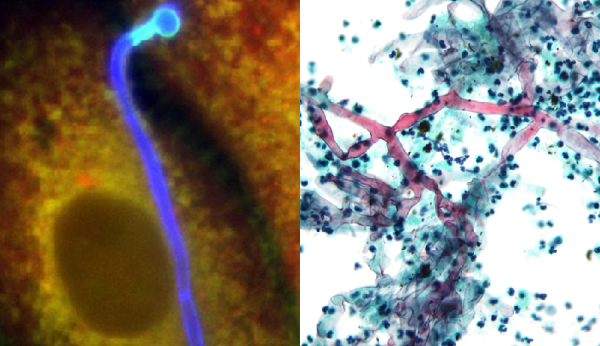
What are the types of mucormycosis infections?
Based on the types of infection of organs mucormycosis are 5 types. In Covid patients main concern is rhinocerebral and pulmonary mucormycosis – those fungi that infect sinus and brain and, lung respectively.
- Rhinocerebral (sinus and brain) mucormycosis is an infection in the sinuses that can spread to the brain. This form of mucormycosis is most common in people with uncontrolled diabetes and in people who have had a kidney transplant.
- Pulmonary (lung) mucormycosis is the most common type of mucormycosis in people with cancer and in people who have had an organ transplant or a stem cell transplant.
- Gastrointestinal mucormycosis is more common among young children than adults, especially premature and low birth weight infants less than 1 month of age, who have had antibiotics, surgery, or medications that lower the body’s ability to fight germs and sickness.
- Cutaneous (skin) mucormycosis: occurs after the fungi enter the body through a break in the skin (for example, after surgery, a burn, or other type of skin trauma). This is the most common form of mucormycosis among people who do not have weakened immune systems.
- Disseminated mucormycosis occurs when the infection spreads through the bloodstream to affect another part of the body. The infection most commonly affects the brain, but also can affect other organs such as the spleen, heart, and skin.
Image credit: CDC
Author: Sumana Rao | Posted on: May 26, 2021
« Previous Article
Next Article »
« Symptoms of rhinocerebral and pulmonary Mucormycosis Mucor live in our environment »
« Symptoms of rhinocerebral and pulmonary Mucormycosis Mucor live in our environment »






















Write a comment